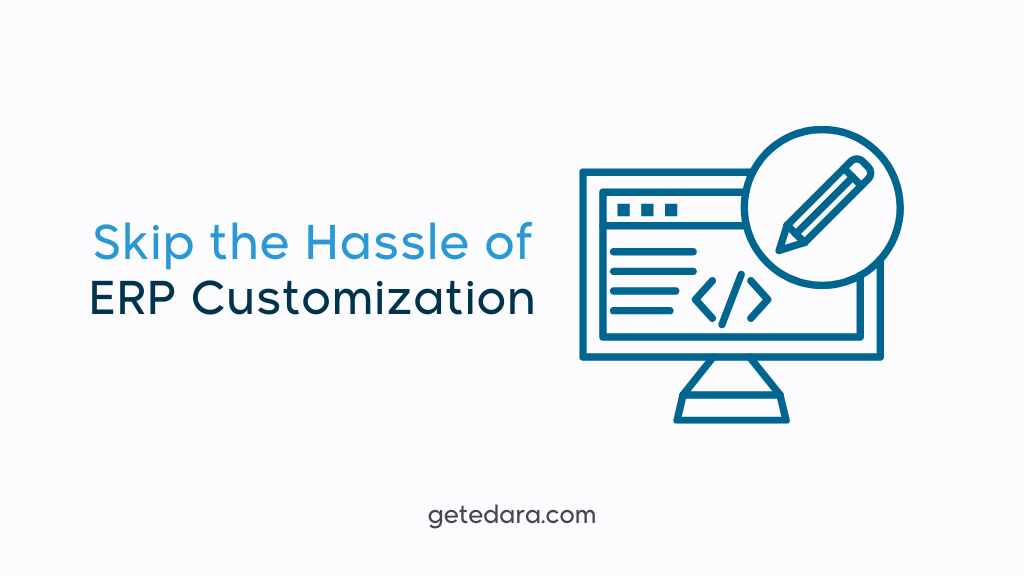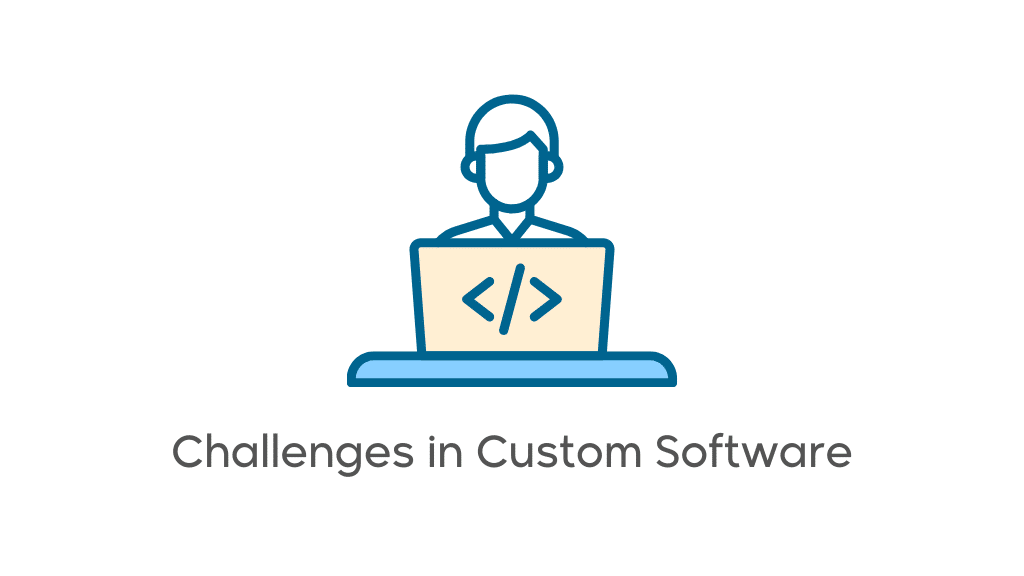ERP Customization: A Costly Mistake or a Necessary Solution?
5 Reading minutes
When implementing an ERP system in your company, the idea of customizations may seem appealing.
Tailoring the system to fit your exact needs sounds like the perfect way to optimize your operations. However, as time goes on, you may realize that instead of making things easier, customizations introduce more complexity, leading to a cycle of ongoing, untested modifications.
In this article, we explore why excessive customization might not be the best approach and how you can achieve efficiency with simpler, more effective solutions.
What Is ERP System Customization?
Simply put, customization involves modifying an ERP system to match your company’s specific needs. It sounds ideal, doesn’t it? A system that adapts to every detail of your business operations!
But the reality is different. Once you begin customizing, you enter a cycle of complexity that never seems to end. You start by tweaking reports, then adding new options, adjusting layouts, modifying interfaces—the list goes on.
At this point, the key question arises: Do you truly need these modifications? Is this level of complexity necessary? While software customization may seem like the ideal fix for your company’s challenges, it often resembles those miracle cures that promise extraordinary benefits but end up causing more harm than good.
Over time, you might find that instead of streamlining operations, your customizations have only made things more complicated. Each new modification leads to another, creating an endless loop of adjustments that take you further away from efficiency.
The Risks of Customization: Why It’s a Common Pitfall
By now, you may have started questioning whether customizations are worth the trouble. To understand the full impact, let’s take a closer look at why modifying ERP software -especially open-source solutions- can do more harm than good.
High Costs: The Hidden Financial Burden
Customizing an ERP system often leads to unexpected expenses. What starts as a small tweak can quickly turn into a costly and time-consuming process.
The reality is that software modifications are never free. Every new feature requires skilled developers, every adjustment takes additional time, and every delay inflates costs.
Even if you find someone willing to make changes at no initial cost, you’re still taking a risk. A poorly executed customization can introduce security vulnerabilities, create system instability, and lead to even greater expenses down the road.
Endless Modifications: A Never-Ending Project
Once you start modifying your ERP system, it becomes an ongoing project with no clear finish line. You may begin with minor adjustments -tweaking reports or refining the user interface- but before long, you find yourself redesigning entire processes.
Instead of improving efficiency, you become entangled in a large-scale software project, shifting focus away from your core business objectives.
Difficult Maintenance and Updates
Contrary to expectations, customizations often make systems more rigid and difficult to maintain. The more changes you introduce, the more fragile your ERP system becomes. A single modification can disrupt other functions, leading to unexpected errors.
When it’s time to upgrade the system, you might find that your modifications are no longer compatible with the latest version, forcing you to either abandon the upgrade or invest even more in reworking the customizations.
In the worst-case scenario, you may end up reverting to manual solutions, such as Excel sheets, just to keep operations running.
Reliance on External Partners: A Continuous Dependency
One of the biggest drawbacks of heavy customization is that it locks you into a long-term dependency on your implementation partner.
Because the system has been modified beyond recognition, even the smallest changes require external assistance.
This creates an ongoing cycle of service fees and delays. Worse, there’s often a conflict of interest: while your company needs a straightforward, efficient system, the service provider may push for additional modifications to justify ongoing costs.
Time Wasted: The Ultimate Cost
Perhaps the most significant downside of ERP customizations is the time lost. Many businesses spend months—or even years—modifying their system, only to realize later that an off-the-shelf solution could have met 90% of their needs from day one.
At the end of the day, is it worth it?
Customization is not just an unnecessary expense, it’s a risk that can drain both time and money. Instead of falling into an endless cycle of modifications, choosing a well-designed ERP system that aligns with your business needs from the start is often the smarter, more efficient choice.
How Can You Meet Your Business Needs Without Software Modifications?
Let’s be realistic: software modifications aren’t the best option. Instead of over-complicating your ERP system, what you truly need are practical solutions that enhance efficiency without triggering an endless cycle of unnecessary changes.
Choose a Ready-Made ERP System
The simplest and most effective solution is to use the system as it is. Modern ERP solutions are designed to be highly flexible, catering to most business needs without requiring complex customizations.
While your company may have specific operational workflows, do you really need to modify every aspect of the system? In most cases, a well-designed ERP provides built-in tools and configurations that allow you to adapt processes without making major changes.
Leverage Built-in Integration Features
If you need to optimize specific workflows—such as managing an online store—you don’t have to rewrite the software from scratch. Instead, take advantage of built-in integration features that connect your ERP system with other platforms.
For example, ERP systems with e-commerce integration automatically sync inventory, sales, and invoices between your store and the accounting system. This seamless data flow reduces manual errors and streamlines business operations, allowing you to focus on growth rather than system adjustments.
Invest in Proper Training
A lack of training is often the real reason why businesses struggle with their ERP systems—not a lack of customization. Instead of modifying the software, invest in educating your employees on how to use it effectively.
Comprehensive training ensures that your team understands the system’s full capabilities, reducing the need for unnecessary modifications. Additionally, utilizing the available technical support can resolve most operational challenges without costly customizations.
Focus on Continuous Process Improvement
The best way to enhance efficiency isn’t through heavy system modifications but through continuous process improvements. Instead of changing the software itself, refine how you use it. Optimizing workflows, improving data management, and streamlining reporting can significantly boost productivity without altering the core system.
The more familiar your team becomes with the system’s features, the smoother your operations will be. Most issues can be resolved by improving internal processes rather than modifying the software.
Final Thoughts: Is Software Modification Really the Answer?
Still unsure about whether to modify your ERP system? Ask yourself:
Will major modifications truly provide a long-term solution?
Is customization the only way to improve efficiency, or can existing features meet your needs?
In reality, most off-the-shelf ERP systems are robust enough to handle business challenges without requiring extensive modifications. The simpler your approach, the more stable and efficient your operations will be.
Instead of falling into the customization trap, focus on maximizing the system’s existing capabilities. Because in the end, simple solutions are often the most effective.
Related articles
7 Mistakes You Should Never Make While Choosing an ERP Solution
Selecting the right ERP system is a game-changer for business growth. It replaces error-prone manual processes and scattered spreadsheets with a powerful cloud-based solution that centralizes all your data in…
Boost E-Commerce with Edara and Jumia Integration
Managing sales across multiple platforms can be overwhelming for online sellers. Re-entering product data, manually tracking orders, and updating inventory often lead to wasted time and costly errors. But what…
The Hidden Challenges of Building a Custom Software Solution
Think of choosing business software like buying a suit. While the allure of a custom-tailored solution might seem perfect, is it really necessary when excellent ready-to-use options exist? Just as…


